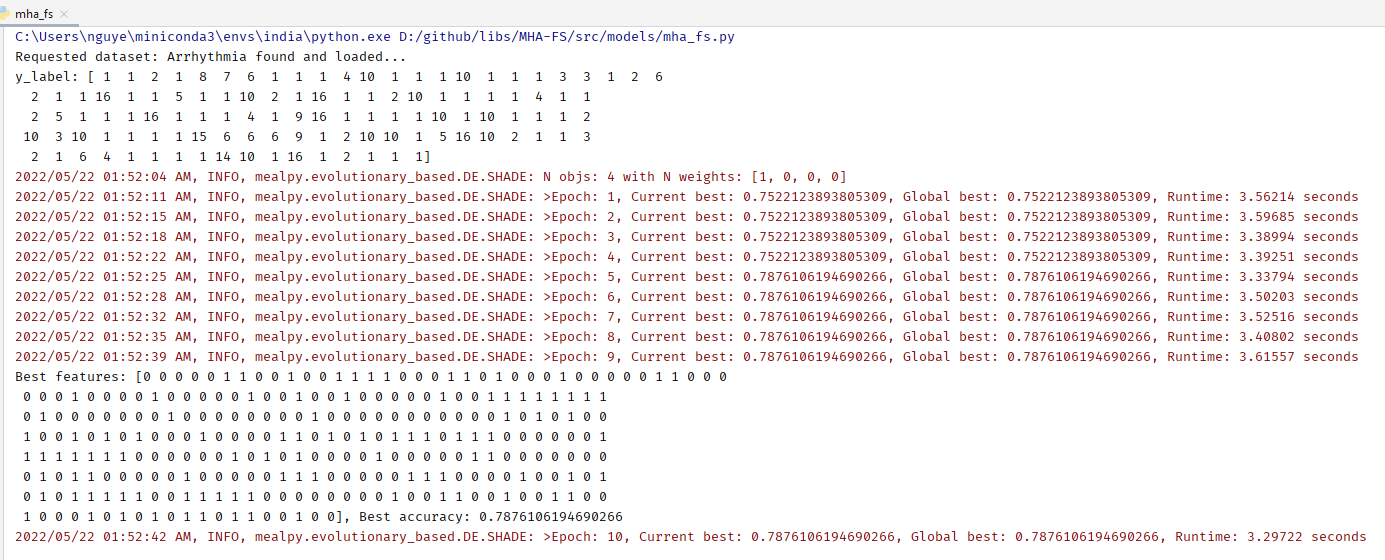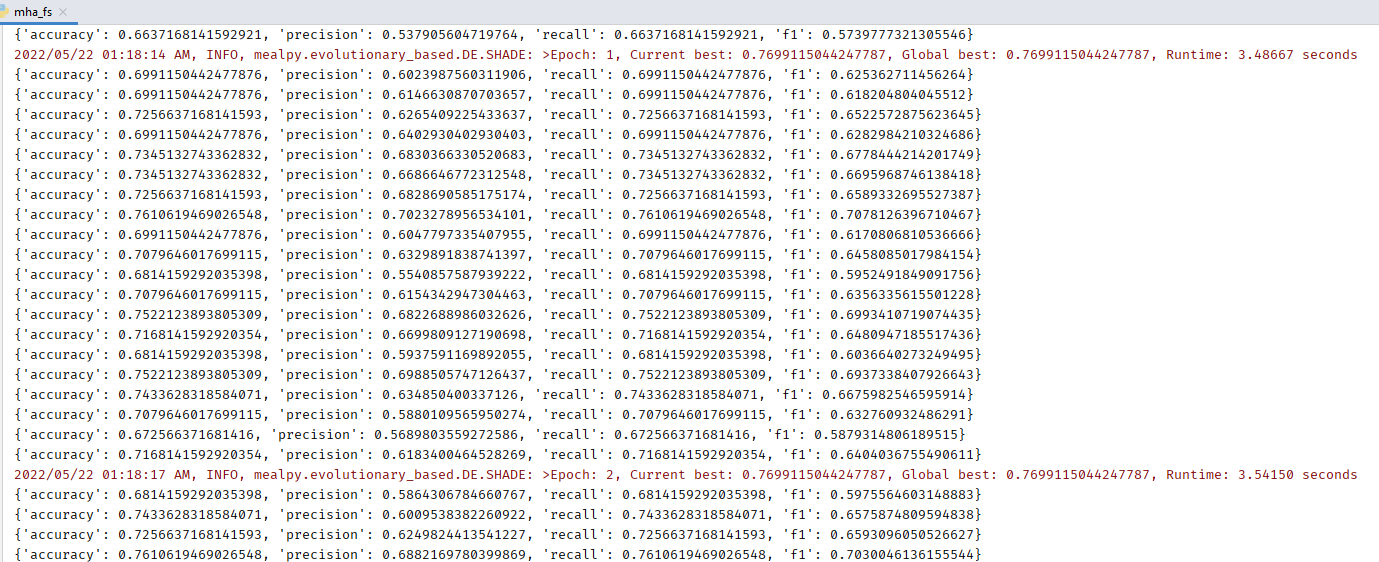This is currently the largest library for Feature Selection problems. More algorithms than this package: https://github.com/Ritam-Guha/Py_FS
+ Cleaner code and shorter code
+ More Meta-Heuristic Algorithms / nature-inspred evolutionary
+ Can use multiple metrics to select features
- Mealpy (https://github.com/thieu1995/mealpy)
- Permetrics (https://github.com/thieu1995/permetrics)
pip install numpy, scikit-learn
pip install mealpy==2.5.0
pip install permetrics==1.3.0
conda create -n ml python==3.7.5
conda activate ml
conda install -c conda-forge numpy, scikit-learn
pip install mealpy==2.5.0
pip install permetrics==1.3.0
Run the file: src/models/mha_fs.py
1. The format of solution / position
- Because we need to select the best features in dataset.
So a solution is a 1-D vector, each dimension represent an index of column in dataset.
+ If it has value 1, meaning this column is selected for the model
+ If it has value 0, meaning this column is not selected for the model
2. Why upper bound is 1.99 and lower bound is 0.0
- Because our range of variables in solution either 0 or 1. But the algorithm create a real-value variables.
So we need to convert real-value back into integer value (0 and 1).
+ That is why the lower bound is 0 for all dimensions (floor of 0 is 0)
+ The upper bound is 1.99 for all dimensions (floor of 1.99 is 1)
Also if all the dimensions have value 0, meaning no column is selected --> Can't run the model
+ So we need to select a random column for the model
3. Fitness function
- Use the classifier object to build a classification model with the selected model (KNN, or Random forrest or SVM)
and calculate the metrics such as accuracy, precision, recall and f1.
- You can define your own classifier at src/models/classifiers.py
- Set the obj_weights to 1 if you interested in selected metric
- In the current example, accuracy metric is selected, so the weight for accuracy is 1 and other metrics are 0.
Beside, this problem will be maximization problem (we want the maximum accuracy = 100%)
4. Use different algorithm
- Select your own optimizer by classname in config.py.
- See the classname in here: https://mealpy.readthedocs.io/en/latest/pages/support.html#classification-table
5. Setting
- Everything needs to config is located at: src/config.py
- If this code is useful for you, please give me some credits, link to my papers.
@software{nguyen_van_thieu_2022_6684223,
author = {Nguyen Van Thieu and Seyedali Mirjalili},
title = {{MEALPY: a Framework of The State-of-The-Art Meta-Heuristic Algorithms in Python}},
month = jun,
year = 2022,
publisher = {Zenodo},
version = {v2.4.2},
doi = {10.5281/zenodo.6684223},
url = {https://doi.org/10.5281/zenodo.6684223}
}

